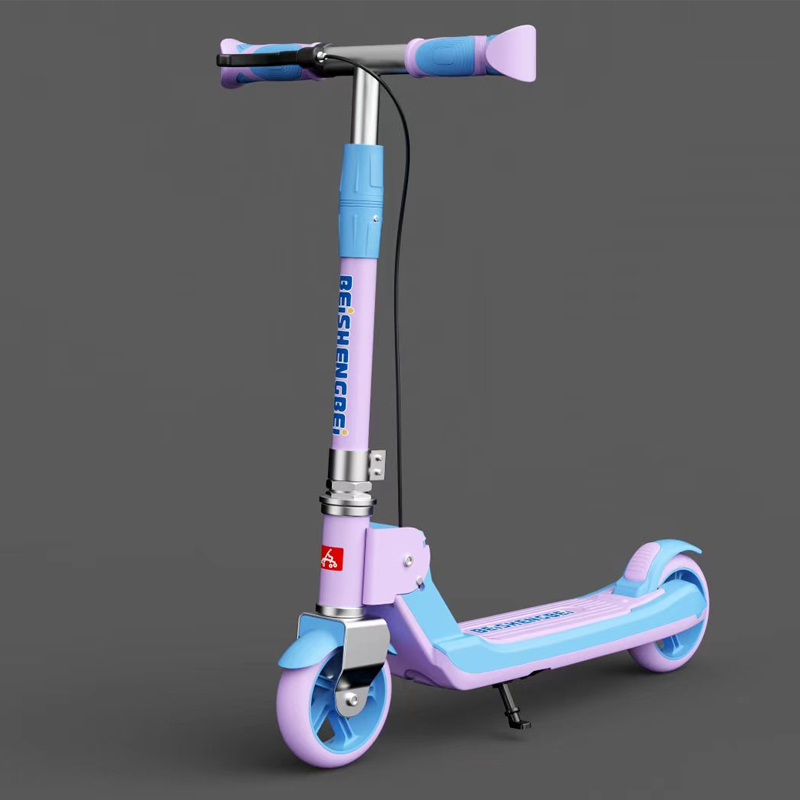How to Teach a Kid to Ride a Scooter
Teaching a child to ride a scooter can be an exciting and rewarding experience. Watching them gain confidence and skill as they Zip around is a joy for any parent or guardian. Here are some steps to ensure that the learning process is safe, fun, and effective.
1. Choose the Right Scooter
Before you start teaching, it's essential to choose the right scooter for your child. Ensure that it is age-appropriate and fits their size and weight. A scooter with adjustable handlebars is a great option as it can grow with your child. Look for a model with a wide deck for stability and durable wheels that can handle various surfaces. Safety should always be a top priority, so make sure the scooter is made from high-quality materials.
2. Gear Up for Safety
Safety must come first. Equip your child with the necessary protective gear, including a helmet, knee pads, and elbow pads. Make sure the helmet fits properly and is worn at all times when riding. This helps prevent injuries and gives you peace of mind as they learn. Encourage your child to be responsible for their gear, emphasizing that it's there to keep them safe while having fun.
Select an appropriate place to begin the lesson. Look for a flat, smooth, and open area, such as a driveway, park, or designated scooter area. Avoid locations with heavy traffic, steep hills, or crowded sidewalks to minimize the risk of accidents. A spacious area allows your child to practice without the pressure of obstacles.
4. Start with Balance
Before your child begins to scoot, help them focus on balance. Have them stand on the scooter with both feet on the deck. Encourage them to practice shifting their weight from side to side and getting a feel for the scooter's balance. You can also have them try standing on one foot, holding onto a wall or railing for support, to build their balancing skills.
how to teach kid to ride scooter

5. Teach the Scooting Motion
Once your child feels comfortable with balance, it’s time to teach the scooting motion. Encourage them to place one foot on the scooter’s deck while pushing off the ground with the other foot. Remind them to keep their knees slightly bent for better stability. It’s essential to take this step slowly, allowing your child to get used to the movement before introducing speed.
6. Practice Stopping and Steering
Teach your child how to stop and steer the scooter effectively. Show them how to use the foot brake (if the scooter has one) and practice bringing the scooter to a stop. Encourage them to look where they want to go, which will help with steering. You can set up simple obstacle courses using cones or markings on the ground to allow your child to practice turning and navigating while scooting.
7. Build Confidence Gradually
As your child becomes more comfortable, gradually increase the complexity of their practice sessions. You can work on different terrains, practice going downhill (if they are ready), or encourage them to scoot faster. Celebrate their progress with praise to boost their confidence and motivation.
8. Encourage Independence
Once your child feels confident on their scooter, let them ride on their own. Encourage them to explore while still adhering to safety rules. Supervise them from a distance to allow for independence while knowing they can still ask for help if needed.
Conclusion
Teaching a child to ride a scooter can be a delightful journey filled with joy and learning. By ensuring safety, providing the right equipment, and gradually progressing through each skill, you’ll set your child on the path to becoming a confident and skilled scooter rider. With practice and encouragement, they will soon be maneuvering with ease, exploring the world on their two-wheeled ride. Happy scooting!
-

 Scoot&RideKids Child Kick Push Scooter 3 Wheels with LED Flashing Tilt Lean Boys Girls Scooter
Scoot&RideKids Child Kick Push Scooter 3 Wheels with LED Flashing Tilt Lean Boys Girls Scooter




- 4
$33.17 -

 Scoot&RideKids Scooter Child Kick Flashing LED Light Up 3 Wheel Push Adjustable Folding 3
Scoot&RideKids Scooter Child Kick Flashing LED Light Up 3 Wheel Push Adjustable Folding 3- 0
$25.52 -

 Scoot&RideKids Scooter Child Kick Flashing LED Light Up 3 Wheel Push Adjustable Folding 2
Scoot&RideKids Scooter Child Kick Flashing LED Light Up 3 Wheel Push Adjustable Folding 2- 0
$33.17 -

 Scoot&RideKids Scooter Teens Foldable Kick Push Scooter Adjustable Height Safe 2 Wheels
Scoot&RideKids Scooter Teens Foldable Kick Push Scooter Adjustable Height Safe 2 Wheels




- 4
$49.99
Meet our partners and discover what powers their creativity!
When you register for a Lohas scooter, you will receive a 10% discount on your first order and can be notified of sales, new product launches and other offers in advance.









